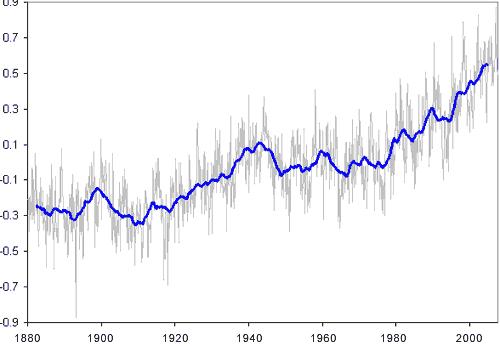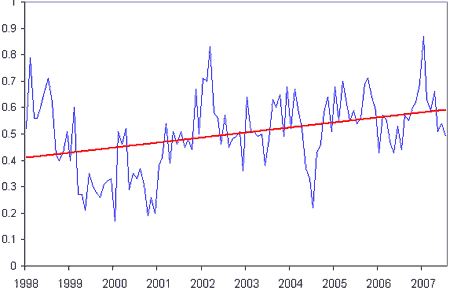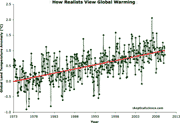Did global warming stop in 1998?
1998 was an unusually hot year as it featured the strongest El Nino of the century. In fact, from Jan to May, 2007 is tied with 1998 as hottest year on record. The WMO reported in August that January and April 2007 were the hottest on record.
However, when determining trends, you don't pick one month or year out of isolation - particularly if that year features a short term weather anomaly like El Nino. By this method, based on the fact that 2005 was .17°C hotter than 2000, you could conclude that the rate of global warming doubled from 2000 to 2005.
5 year moving average
When considering long term climate trends, you need to filter out short term weather anomalies like El Nino or volcanic eruptions - an easy way is to plot a 5 year average. This shows the trend hasn't reversed at all.

Monthly global temperature anomaly (grey line) with a 5 year moving average (blue line) from 1880 to 2007
Line of best fit
While a 5 year average is visually compelling, a more rigorous statistical method to determine any trend is to apply a line of best fit to the data.

Monthly global temperature anomaly (blue) with line of best fit (red) from 1998 to 2007































 Arguments
Arguments



























